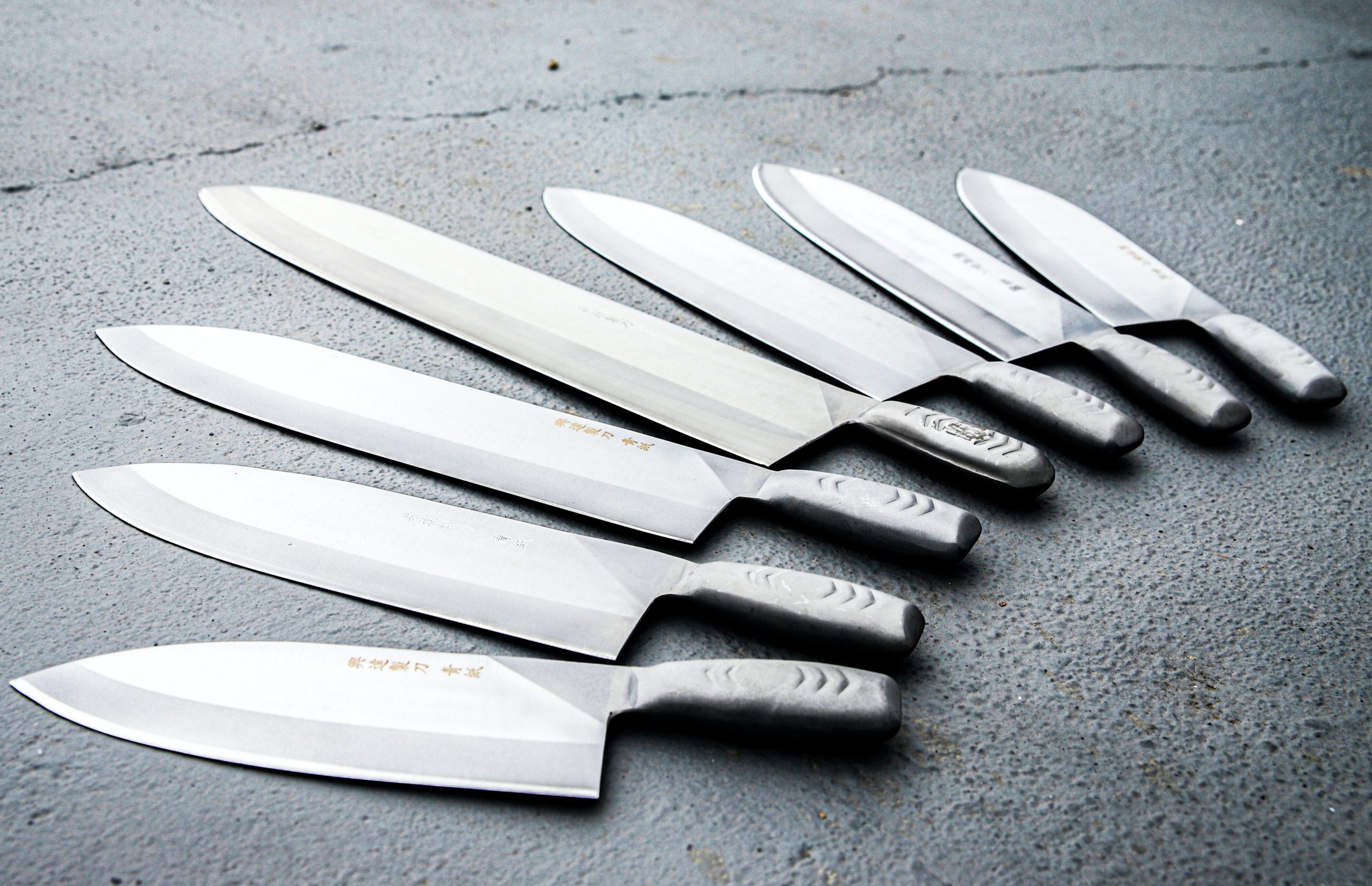How to Shop for a knife:
It is possible that finding the ideal knife for your kitchen may seem like an uphill battle. Because there are so many choices available, it might be challenging to choose how to get started. You may, however, locate the ideal one for your culinary requirements if you do a little bit of study and have a crystal-clear grasp of your requirements.
Kitchen knives mainly fall into two categories, which can be either Western or Japanese. The Japanese ones are often lighter and have blades that are thinner, in contrast to Western ones, which tend to be heavier and have thicker blades. Both styles have their own pros and cons, so it’s important to think carefully about which one will meet your needs best.
Material of the blade
When choosing a knife, one of the most important things to think about is what the blade is made of. Stainless steel, high-carbon stainless steel, and ceramic are the three materials that are used the most often in the production of them. Because of its resistance to rust and the ease with which it can be maintained, stainless steel is a material that is often used. High-carbon stainless steel is quite similar to traditional stainless steel; however, it is far more long-lasting and keeps its edge for a significantly longer amount of time. Ceramic knives have a very sharp edge, are resistant to corrosion, and are lightweight; yet, they are fragile and may chip easily.
Handle
When shopping for a knife, the handle is yet another essential component to take into consideration. Your hand needs to be able to rest comfortably on the handle, it ought to be simple to grasp, and it ought to be sturdy. Handles can be made from many different kinds of materials, such as plastic, rubber, and even wood. Some folks would like to have a handle that is simple to hold, while others would rather have one that is straightforward to clean.
Form of the blade
When choosing a knife, the shape of the blade is another important thing to think about. Slicing, dicing, and chopping are all best done with blades that have different shapes for each task. The blade of a chef’s one has a unique form that makes it suitable for a wide range of cutting applications. Another knife with a blade that may be used for a variety of tasks, including slicing, dicing, and chopping, is called a Santoku knife. The blade of a paring knife is narrower than that of a regular one, making it ideal for peeling, trimming, and other similar activities.
Weight
Another important thing to think about when buying a knife is how much it weighs. Some individuals choose them that are lower in weight, while others favor knives that are heavier in weight. The weight of it may have an impact on the ease with which you can do tasks with it, as well as the general degree of comfort you have while using it.
Length
The length of the blade is another important thing to think about when choosing a knife. The length of the knife’s blade may have an impact on both its reach and its mobility. For instance, using a blade that is longer may make it simpler to cut through bigger products like roasts and hams, but a blade that is shorter is more suitable for cutting through smaller items like fruits and vegetables.
Cost
As a last consideration, the cost of the knife is an essential component to take into account. The cost of a good chef’s knife may vary anywhere from a few dollars to several hundred dollars. You should always remember that you get what you pay for, even if there is no assurance that the one with a greater price would be of superior quality. A knife of a higher quality will have a longer lifespan, function more effectively, and be more pleasurable to use than one of a lower quality.
Conclusion
In conclusion, in order to select the ideal knife for your kitchen, you will need to give serious thought to a number of different aspects. You can locate the ideal one for your culinary requirements if you search for one with certain criteria in mind, such as the material of the blade, the handle, the form of the blade, the weight, the length of the blade, and the price. Take your time, do your homework, and don’t be afraid to splurge on a knife of superior quality; the money you spend now will be well worth it in the long run.
See also: How to shop for a blender


